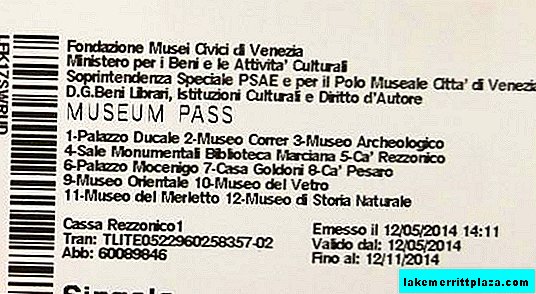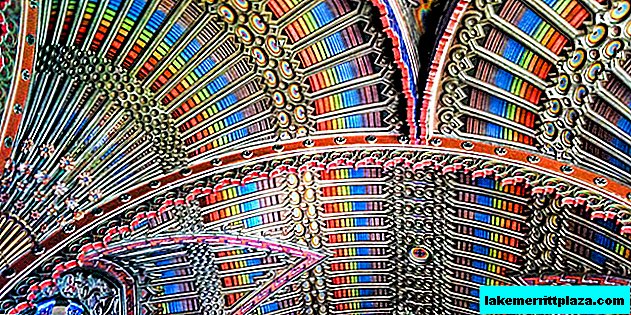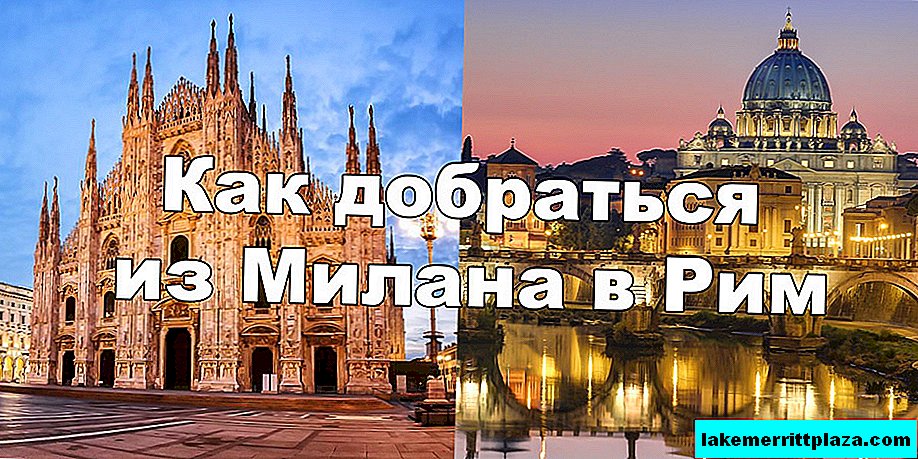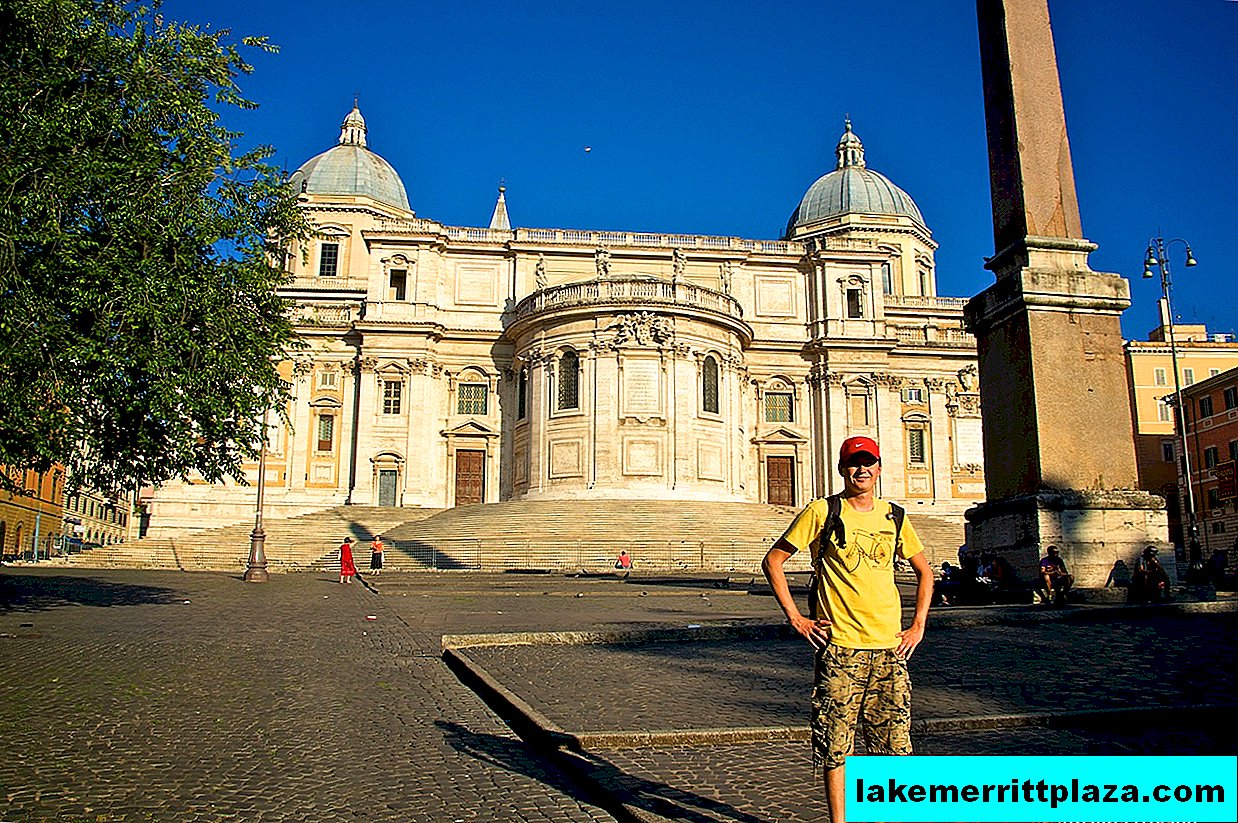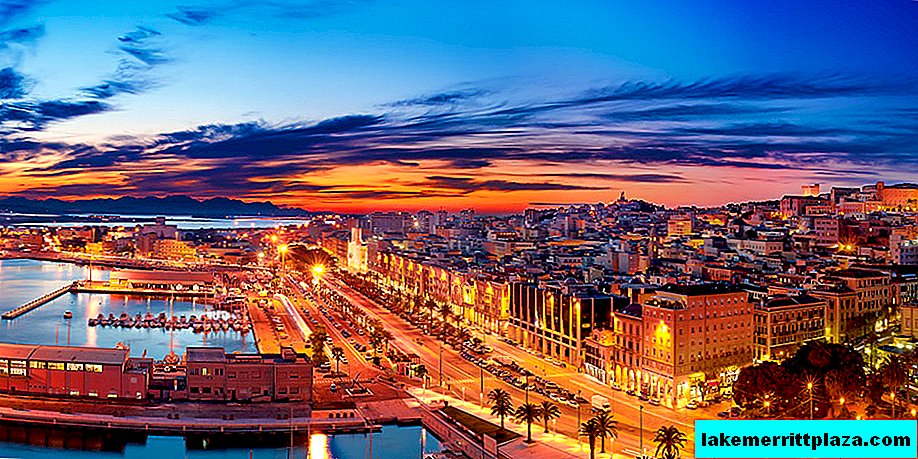Verona dates back to prehistoric times. It was ruled by the Romans, Venetians, Austria-Hungary and even Napoleonic France. The dynasty of Scala made a great contribution to the development of the city. It is not surprising that Verona has preserved a huge number of attractions of various eras. What is worth seeing in Verona in the first place, we will tell in this article.
... You can absolutely not know anything about Verona, but remember exactly where the events of the Shakespeare tragedy "Romeo and Juliet."
Juliet's House
The fact that the heroes of the play were invented by the author, and he himself has hardly ever been to Italy, does not stop romantics from around the world: every day thousands of tourists pass through the small courtyard of the Juliet House.
The 13th century medieval palazzo, owned by the Dal Capello family for a long time, is today one of the main attractions of Verona. It houses costumes and decorations for the famous productions of Romeo and Juliet, as well as a collection of luxurious furniture of the XVI-XVIII centuries and numerous murals.

Thousands of tourists come to the Juliet House daily
But first of all, visitors are interested in something else - the very balcony from which Juliet allegedly heard Romeo's confession.
By the way, the balcony appeared here only in the 1930s, and the bronze statue of Juliet in the courtyard - even later. The latter, by the way, is also endowed with the ability to fulfill the most cherished desires.
- Address: Casa di Giulietta, Via Cappello, 23
- Hours: the yard is open around the clock;
- Museum: Mon: 13: 30-19: 30, Tue-Sun: 08: 30-19: 30 (the museum is closed on January 1 and December 25)
- Tickets: entrance to the courtyard for free, museum 6 euros
Arena di Verona
Everyone heard about the Colosseum, but perhaps not many know the amphitheater, which is half a century older than its Roman counterpart, is preserved. In addition, it also serves as the venue for one of the main opera festivals in Europe.
Every year, tens of thousands of spectators come to the Verona festival alone to listen to the greatest operas in the open air arenas, and performing here is considered a great honor even among world-famous stars.
However, the Arena di Verona is interesting not only for its history and opera festival. Concerts are regularly held here for audiences with more democratic tastes. For example, it was the Verona Arena that Adriano Celentano chose for his big concerts in 2012.

The Verona Amphitheater is half a century older than its Roman counterpart
And this despite the fact that his previous "last" tour was back in 1994.
Nowadays, the capacity of the historical concert venue is 20 thousand people, and you can get inside only with a ticket for a performance / concert, as part of an excursion or with Verona Card. The latter, by the way, gives access not only to the Arena, but also to all the main sights of Verona.
- Address: Piazza Brà, 5
- Opening hours: Excursions: Tue-Sun: 08: 30-19: 30, Mon: 13: 30-19: 30
- Tickets: about 10 euros, Verona Card free
Justy's Garden
The English traveler Thomas Coriat did not stint praise at the time, calling the garden of Justy "the second earthly paradise."
However, to me, it was created by quite earthly efforts - thanks to the influential Verona family of Justi, who in the 16th century equipped their palace and park here.
Citrus and cypress dominate here, antique statues and fountains inspire for thought, and hedge mazes hide from prying eyes. The garden terraces offer a panoramic view of Verona.
They say that here Cosimo de Medici III, Mozart, Goethe and even Emperor Alexander I sought solitude.
- Address: Via Giardino Giusti, 2
- Opening hours: Mon-Sun 09: 00-19: 00
- Tickets: 10 Euro
Piazza delle Erbe
Once upon a time, the Roman Forum was located on the site of Piazza delle Erbe, but today it is a noisy market. By evening, the malls are empty, but numerous bars and cafes open their doors.
The center of the square is crowned with a stone canopy on four columns, which served as a place for elections. A little north is the 14th century fountain with the marble Verona Madonna and the marble column with the lion of St. Mark, the patron saint of the Venetian rulers of the city.
The square faces the windows of the luxurious Baroque Maffei Palace, the House of Merchants, the House of Mazzanti and other historical buildings.

There is a market in Piazza delle Erbe, and many more bars and cafes
Piazza delle Erbe is also famous for the 84-meter-high Lamberti Tower located here, which is Verona's most famous observation deck.
Once the tower was supposed to serve as a home for the Lamberti family, who decided in this way to demonstrate their power. The tower itself began to be built in 1172, and several decades later, the Commune House was built around it.
The tower was last restored in 2007. Inside is the Gallery of Modern Art.
- Address: Piazza delle Erbe
- Hours: Piazza - around the clock; Lamberti Tower Mon-Fri: 10: 00-18: 00; Sat-Sun / holidays: 11: 00-19: 00
- Tickets: piazza - admission is free; Lamberti Tower - 8 euros. With Verona Card free.
Castelvecchio
The medieval castle of Castelvecchio arose on the banks of the Adige river by the will of the ruling Scaliger dynasty in the middle of the XIV century.
You can admire the city from the main tower and castle walls. From here you can also see the Skaliger pedestrian bridge thrown across the river - a favorite place for walking for locals and tourists.
Today Castellveccio Castle houses the City Museum of Art. The spacious halls contain a collection of masterpieces of Italian painting, including paintings by Bellini, Rubens, Tintoretto, Pisanello, as well as Verona sculpture.
Not far from the castle you can see the Arch of Gavi, which has been standing here for 20 centuries and once was part of the Roman road. Traces of chariots have even been preserved under the arch.
- Address: Corso Castelvecchio, 2
- Opening hours: Tue-Sun: 08: 30-19: 30, Mon: 13: 30-19: 30
- Tickets: 6 euros, courtyard can be visited for free
Ponte Pietra Bridge and Roman Theater
The first bridge in the place where Ponte Pietra is now located was thrown over the Adige River at the end of the 1st century BC. Then it was a wooden building, and the bridge collapsed several times. The first version of the bridge in stone also did not last long.
The architect Fra Giocondo in 1508 managed to breathe new life into the design. 5 arched spans of pure marble regularly served until 1945, when the bridge was blown up.
Ponte Pietra was restored thanks to the surviving photographs: parts of the bridge were lifted from the bottom of the river, and the missing elements were laid out in red brick.
Nearby is another attraction of Verona, leading its history from the 1st century - this is a Roman theater, restored by archaeologists at the beginning of the 20th century.

Ponte Pietra was restored thanks to preserved photographs
Here and today you can see stones with holes that were used to pull the ropes and, thus, open / close the wings. Marble mosaic has been preserved on the floor.
The 13th-century Gothic Santa Anastasia Basilica is also nearby, the entrance to which is decorated with stone-carved scenes from the life of St. Peter.
Inside you can find two marble hunchbacks, one of which was created by Gabriel Calari - the father of the artist Paolo Veronese. The fresco of Pisanello "St. George Liberating the Princess" is also stored here.
- Address: Ponte Pietra
- Work time: round the clock
- Tickets: bridge - free admission, Basilica of Santa Anastasia - 3 euros
Basilica of San Zeno Maggiore
The majestic Romanesque church impresses with both external and internal decoration. Here, in a cancer of crystal, the remains of the first bishop of Verona and the patron saint of the city lie.
The main part of the basilica of San Zeno Maggiore was built in the XI-XII centuries from brick and volcanic tuff. The walls are covered with a bas-relief on the theme of the Apocalypse, the entrance is decorated with a Gothic portal, and the gates are lined with bronze panels with biblical scenes.
In the church itself, it is worth paying attention to the wooden roof of the XIV century, the triptych of Mantegna with the image of the Madonna and the marble statue of St. Zeno.
- Address: Piazza San Zeno, 2
- Opening hours: from March to October Mon-Sat 08: 30-18: 00, Sun and holidays 12: 30-18: 00, from November to February Mon-Sat 10: 30-13: 00, 13: 30-17 : 00, Sun and holidays 12: 30-17: 00.
- Tickets: 3 Euro
Scaliger Arches
The Church of Santa Maria Antica cannot boast of impressive size, but the tombs located in front of it are among the most important sights of Verona.
Gothic-style sarcophagi are crowned with equestrian statues depicting the images of prominent representatives of the ruling dynasty della Scala.
The burials of the XIII-XIV centuries are made in the Gothic style and represent a one-of-a-kind version of the "suspended" burial.

Scaliger arches - the only type of "suspended" burial
The figures of the riders depict Kangrand I, at whose court he lived in exile of Dante, Cansignorio, who, in pursuit of power, strangled his elder brother, and then rotted the younger and Mastino II, known for his conquests, in prison.
You can admire the tombs from the outside, but if you wish, you can buy a ticket and go into the church courtyard to take a closer look at this masterpiece of architecture.
- Address: Via Arche Scaligere
- Opening hours: Mon-Fri: 15: 00-18: 00, Sat-Sun: 10: 30-13: 00
- Tickets: 5 Euro
Piazza Signoria
The medieval Piazza della Signoria has become the focal point of the famous palazzos: here are the Palazzo della Rajone, famous for including the Ladder of the Mind attached to the courtyard, the Loggia of the Council, decorated with statues of famous residents of Verona, the Government Palace and the Palace of the Tribunal.

Signoria Medieval Square - the center of the famous palazzo
In 1865, a monument to Dante was erected on the square, which, after being expelled from Florence, he lived 13 years in the palace of Podest, located here.
- Address: Piazza dei Signori
- Work time: round the clock
- Tickets: free admission
Verona Cathedral
The main cathedral of the city is an outstanding example of Romanesque architecture of the 12th century, and in the 15th century the appearance of the basilica was supplemented by a Gothic nave. The nearby bell tower was designed by Sanmikeli at the beginning of the 16th century, but was completed only in 1927.
Above the main entrance you can see a stone image of the knights of Roland and Oliver - the heroes of the Caroline epic.
The interior of the church attracts attention with columns of red marble and skillfully executed choirs, and the altar is decorated with the work of Titian, "Ascension of the Virgin Mary".
- Address: Piazza Duomo, 21
- Opening hours: Mon-Fri: 06: 45-11: 30, 16: 00-19: 30; Sat-Sun: 7: 00-13: 30, 17: 00-19: 30
- Tickets: free admission
If this article was useful to you, be sure to save it to your social network or share with your companions. During the trip, this information will be useful to you more than once.
Photos by: blogoitaliano.com.

